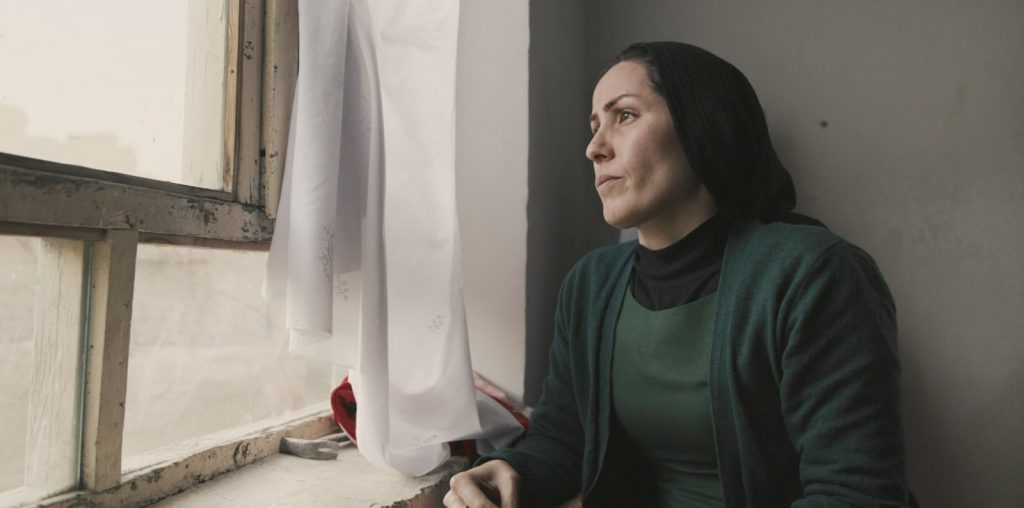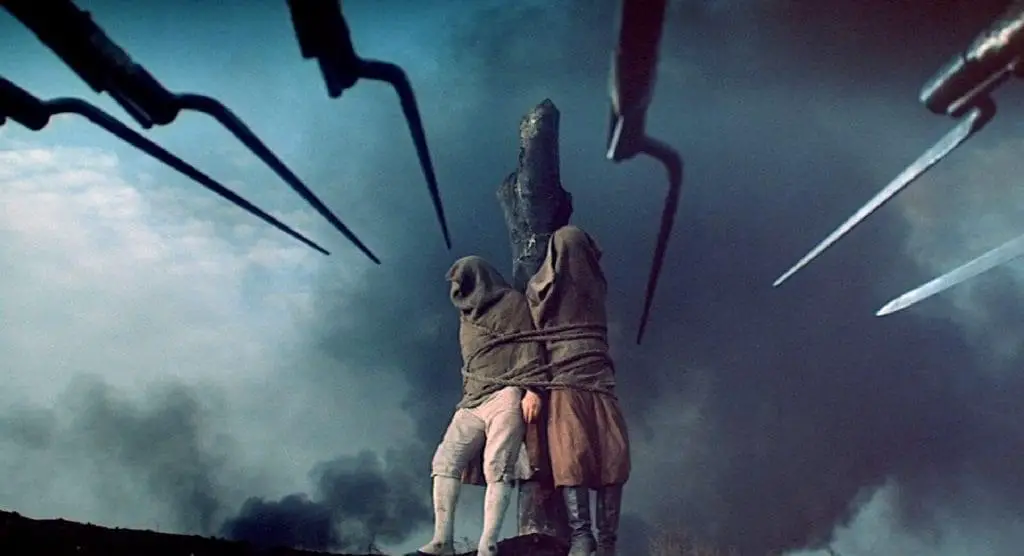
German poet Rainer Maria Rilke wrote his poem “Requiem for a Friend” in 1908. His beloved friend, painter Paula Modersohn-Becker, had died in childbirth a year earlier, and in a delayed reaction, Rilke wrote the haunting and powerful poem in three days, in a paroxysm of grief, while holed up in a Paris hotel room. Filmmaker Antero Alli uses a complex dramatic scheme to bring the poem vividly to life in his absorbing, beautifully made film incantation of Rilke, “The Greater Circulation.”
The film contains the full text of the poem, read with consummate clarity, simplicity, and insight by Alli himself, accompanied by scenes of Rilke (portrayed perfectly by Lloyd Bricken) writing the poem in his hotel room, and a very complex montage of dreams, fragmentary images, and incidents related to the poem. The footage, shot on Super 8 and tinted sepia, is gorgeous. It is greatly enhanced by magical visual effects sequences, created by Michael McWhirter, which are among the most dense and beautifully made visual collages I have ever seen to accompany poetry. (They put Eric Drooker’s animation of Ginsberg’s “Howl” in the movie version of that poem to shame.)
But the poem is just one strand in Alli’s complex scheme. The film also tells the story of Roland (Lee Vogt), an experimental theater directer in contemporary Berkeley, who is creating an avant-garde staging of the poem in collaboration with three actresses. They women play female archetypes who shape the consciousness of both Rilke and Modersohn-Becker: The Mother, The Artist, and The Soul (who is forced to choose between motherhood and art.) They regard their performance not as a play, but as a magical ritual, and by the end of the film, the ritual is shown to have startling and permanent effects on the lives of several characters.
In a pivotal role, Bricken also plays Albert, a young Rilke-obsessed theater critic who is stalking Roland and the production. He ends up with an unexpected and central role in the performance, and without giving away key aspects of the story, it becomes clear that there is a logical reason why the same actor who plays Albert also plays Rilke. (He is astonishingly different and equally effective in both roles.) The story, generally speaking, is richly enhanced by multiple parallels between the story of Rilke and Modersohn-Becker and that of the Berkeley artists.
The story has some highly implausible elements, and the dialog in the film is often stilted and overly schematic, but these weaknesses cause surprisingly little damage to the film, which remains vividly gripping and rich with layers of meaning. (Probably the most implausible element of the story is the notion of a poetry-loving theater critic avidly pursuing an avant-garde director.) Alli has written that he wanted the images to tell the story in this film more than the words, and he has certainly succeeded.
Sylvi Alli, Felicia Faulkner, and Leah Kahn, who play the three actresses, are all excellent. In their different ways, each conveys their fascination with the director Roland, and their identification with the plight of Modersohn-Becker, since they are also women artists who experience the conflict between family and art. Despite the problems with the film’s script, it is their physical and vocal presence in the film that brings the story to life, and since they are performing silently in a danced version of the poem, this is far more important.
The film subtly and poetically explores the different social positions of male and female artists from a variety of angles. Rilke told Modersohn-Becker that she was of a special class of women artists who are meant to put their creativity into art, rather than into children, in order to provide what he called “the greater circulation.” It’s too bad he didn’t provide a practical form of birth control, so that she could put his idea into practice. But then, her constant depiction of mothers with babies in her paintings showed that her own view was a different one.
Both Rilke and director Roland are depicted as brilliant, sensitive, but flawed men, who use women for their own needs. Roland in particular is a compulsive manipulator, as he carefully cultivates a cult-like reverence among the actresses, who are awed by his refined sensitivity and insights into Rilke. We learn that he has had an affair with one of them at the same time his wife was dying, and a scene in which he apologizes to her for having “used” her is itself a fairly spectacular act of emotional manipulation, as he racks up points for being such a sensitive and vulnerable guy. But he is not a simple cad, but also a genuine artist and good-hearted soul, so he is highly conscious of his faults. By the end of the film he has found a way to expiate his sins by giving a kind of startling gift.
Watching the film, one is preoccupied much of the time with the story of Roland and the actresses, but the ultimate function of this story in the film is to bring us closer to Rilke’s poem. By intercutting the poem and the Rilke footage with a more contemporary story, Alli has opened up many hidden dimensions of the poem for contemporary viewers, making it easy for us to imagine Rilke’s and Modersohn-Becker’s situation as our own. The vision of these contemporary artists, literally haunted by Rilke and his tale of being haunted in turn by his friend, vividly dramatizes the power of art to channel powerful forces and alter the course of our lives. The story gives us the way into the poem, but it is Rilke’s powerful poem, as illuminated by Alli’s recitation and the beautiful sequences of Rilke in his Paris hotel room, that delivers such a poignant protest against the premature ending of a painter’s life and of her art.

